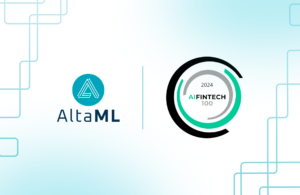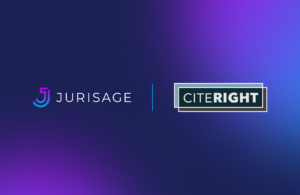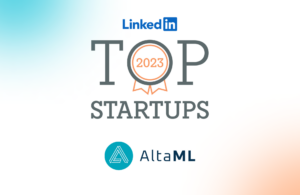Large Language Models and the Future of Insurance
September 12, 2023
•
4 min read
In an era marked by rapid technological advancements and evolving customer expectations, the insurance industry stands at a pivotal juncture. Large language models (LLMs) are at the forefront of this transformation. They redefine not just operational efficiencies but also the essence of customer engagement and service delivery. These advanced algorithms offer the capability to automate complex underwriting processes, thereby significantly reducing costs and improving accuracy. Their ability to distill large volumes of data is invaluable for decision-making, particularly in specialized areas like commercial policies that require a nuanced understanding of contextual factors. For professionals in the insurance sector, the integration of LLMs is not just about staying relevant; It’s about future-proofing their businesses through enhanced service quality and operational agility.
Why Should Customers Care about LLMs?
Customers can benefit substantially from the adoption of LLMs in the insurance industry. LLMs enhance customer service by providing quick and personalized responses and reducing wait times. They also contribute to fraud detection, protecting genuine customers from unfair penalties. Additionally, these algorithms can offer tailored insurance plans, giving customers better value for their money. The 24/7 availability of LLM-powered chatbots adds flexibility, allowing inquiries to be addressed at any time.
Why Should Insurance Companies Care about LLMs?
Insurance companies should pay attention to LLMs due to their potential for operational efficiency and cost reduction. LLMs can automate various tasks that traditionally require human intervention, such as data entry, policy writing, and even complex risk assessment. This automation allows companies to allocate their human resources to more strategic activities, thereby gaining a competitive edge. Moreover, LLMs can assist in fraud detection, saving both time and money for the company. One application that is particularly relevant for insurers, is the automated text-mining capabilities of LLMs, like those developed by AltaML. This technology enables the rapid extraction of predictive insights from not only claims documents, but also publicly available information, providing a more nuanced understanding of claims trends. For property and casualty (P&C) insurers, LLMs are instrumental in predicting claim development.
How Are LLMs Making an Impact?
- Automating Report Generation: LLMs can analyze large datasets and generate comprehensive reports, eliminating the need for employees to manually sift through data. Companies like Roots Automation offer digital coworkers like “Stuart – Underwriting Assistant,” that can automate the process of generating underwriting reports.
- Claims Processing: Insurance giant Zurich, is already testing technology in areas such as claims and modeling. LLMs can help verify the validity, accuracy, and completeness of claims, automating tasks such as document review and damage assessment. RPA, Classical AI, and LLMs combined together can get the right claim to the right desk at the right time. They also capture data that further supports more predictive claims development.
- Fraud Detection: Companies are increasingly using machine learning for fraud detection and are now beginning to incorporate LLMs. LLMs play a valuable role in identifying social circles and detecting potential collusion, which enhances detection accuracy, reduces false positives, and makes investigations more cost-effective.
- Customer Service: Berlin-based INZMO, has launched a chatbot service to improve customer service. Chatbots, powered by LLMs, handle various customer service tasks. This includes answering frequently asked questions and providing personalized recommendations, effectively lightening the workload on human customer service agents.
What Are the Key Concerns?
As LLMs continue to evolve, their integration will become critical to maintaining a competitive edge through better risk selection, and better service, while reducing the cost ratio. However, adoption is not without its challenges and requires active management and thoughtful consideration to integrate LLMs effectively.
- Transparency and Trust: All financial institutions handle sensitive client data. Ensuring it is secure, and maintaining end-client trust is crucial. This is especially true given the notoriety of LLMs like ChatGPT that incorporate data used for queries. One way to avoid this situation is by creating application programming interfaces, which can help ensure that sensitive data remains within the company’s system environment.
- Bias and Ethical Considerations: Inherent bias within datasets can amplify existing systemic bias. Acknowledging this fact is the first step to addressing the issue. We recommend initially limiting LLM integration to tasks like data scraping for human decision-making until there’s a better internal understanding of bias mitigation in decision-making.
- Continuous Learning and Adaptation: As a fast moving technology, new use cases are constantly emerging, and existing models require regular updates to maintain competitiveness. At AltaML, we emphasize a flexible approach with continuous monitoring to stay current with developments. Start with small, agile LLM projects to gain hands-on technology experience and be prepared to invest in an expanded project portfolio as opportunities arise. We anticipate that significant LLM opportunities will emerge more quickly than traditional annual budget cycles.
What Are the Next Steps?
While it’s challenging to gauge the immediate strategic importance of LLMs, their potential to be a game-changer is evident. Insurers and asset managers should not delay exploring LLMS given their potential significance. Building in-house expertise is a critical first step to future-proof your business. Here’s one possible approach:
- Identify a “no brainer” use case: Many industries are now leveraging the automated language mining capabilities of LLMs to extract trends from public information, whether it’s analyzing company quarterly reports, gauging oil demand, or assessing credit risk exposure proxies. In the insurance or wealth management sector, we recommend identifying a relevant application. Consider P&C, where LLMs can track evolving news cycles to better pinpoint localized risks, enabling better risk management. Developing systems for this use case is straightforward and cost-effective, with an estimated investment of $100,000 to $200,000 USD. Unlike projects involving in-house data, it doesn’t present the same challenges.
- Pilot Programs: Start with a pilot, then refine and iterate the model to maximize practical use. Insights from scraping unstructured data in the public domain can have a very short-payback period, while at the same time providing good experiential learning.
- Training and Development: Given its potential significance, establishing in-house LLM and AI capabilities is a strategic move. While we don’t anticipate immediate value creation from this in the business case, it’s an important aspect of our justification. Partnering with experienced vendors alongside our in-house team can accelerate the project and strengthen our overall capability.
- Integration: Seamlessly integrate LLMs into existing systems, ensuring optimized data flow and processing.
Wrap Up
The integration of LLMs into the insurance and financial services industry is poised to be a game-changer, benefiting both companies and clients. Companies stand to gain from improved risk selection, operational efficiency, cost reduction, and a competitive edge across various functions from underwriting to fraud detection. Clients, on the other hand, can expect enhanced service quality, personalized offerings, and round-the-clock availability. However, as the industry undergoes this technological shift, it must also address transparency, ethical considerations, and practical implications associated with harnessing the fast-evolving technology. Practical approaches can help tackle these challenges, positioning companies for a competitive advantage in an enhanced and ethically efficient future.
 Navigating Bias in AI with Open-Source Toolkits
Navigating Bias in AI with Open-Source Toolkits
 AltaML Secures Spot on AIFinTech100 for Consecutive Year
AltaML Secures Spot on AIFinTech100 for Consecutive Year
 Jurisage and CiteRight Finalize Merger, Become Jurisage Group Inc.
Jurisage and CiteRight Finalize Merger, Become Jurisage Group Inc.


